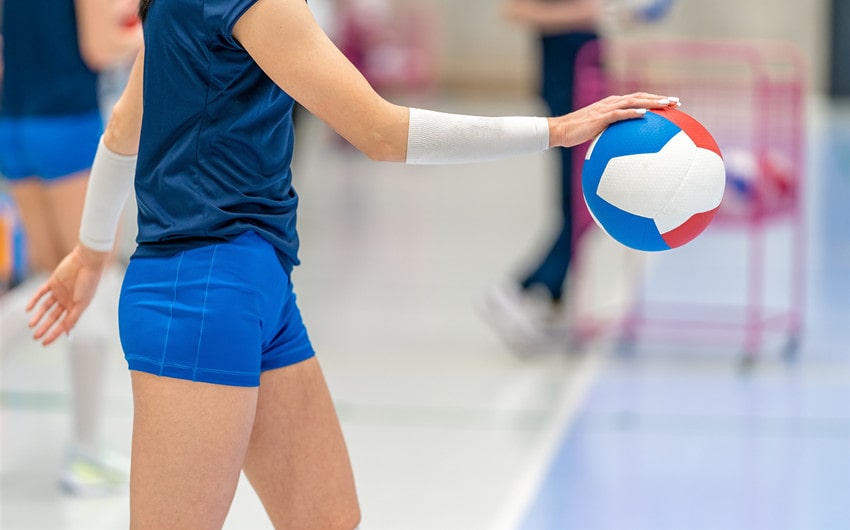Why Are Volleyball Shorts So Short (And Is There a Reason?)
There I was, watching a college volleyball game on TV, when I noticed something I’ve noticed many times before but never really questioned out loud: why are their shorts so short? Like, aggressively short. The kind of short that makes me wonder how they stay in place while diving and jumping. Is it a performance thing? A tradition? A weird fashion holdover? I decided it was time to find out why volleyball shorts are, well, barely shorts.
It’s All About Movement
The most obvious answer is mobility. Volleyball requires constant movement—sprinting, jumping, squatting, diving—and players need to be able to do all of that without restriction. Long, loose shorts can bunch up, slide around, or snag during quick transitions. Spandex-style shorts solve that. They stay put, hug the body, and don’t get in the way. They’re like a second skin, which is exactly what you want when you’re lunging for a dig or leaping for a spike.
Compression shorts also provide subtle muscle support, which can help with endurance during long matches. Less fabric flapping around means better aerodynamics and less friction during those sudden dives and high-speed lateral moves. They also reduce chafing, which is a huge deal for athletes making constant contact with the court. And because the shorts move with the body, there’s no need to tug or adjust mid-play—an underrated but essential perk when you’re mid-rally.
There’s a Historical Backstory
Women’s volleyball uniforms didn’t start out short. In the 1970s and 80s, players wore looser shorts, sometimes almost like gym trunks. These were functional but bulky, and as sports science and fabric technology evolved, so did expectations for gear. By the 1990s, many women’s teams had adopted tighter, shorter shorts as the new standard. The switch coincided with the rise of spandex and Lycra materials that offered both flexibility and structure.
Over time, the short shorts became more than just gear—they became a symbol of elite play. Players grew up training in them, watching pros wear them, and associating them with high-level performance. The look became tied to the sport’s identity, and like many traditions in athletics, it’s stuck around—partly because it works, and partly because it’s just what volleyball has come to look like. Uniform standards at collegiate and international levels further cemented this as the default style.
The Visibility (and Controversy) Factor
Of course, there’s been plenty of debate. Critics argue that short shorts have less to do with performance and more to do with how women’s sports are marketed. Unlike their male counterparts, who typically wear longer, looser shorts, women athletes often face additional expectations around appearance. This isn’t exclusive to volleyball, but the difference is especially stark here.
Some athletes and fans say the uniform helps them feel powerful and agile—while others argue that it can feel objectifying. There have been public conversations around the double standards in sports uniforms, especially when international organizations fined women’s beach handball players for choosing longer shorts over required bikini bottoms. These issues point to a deeper need for flexibility in uniform design—ones that give athletes real options instead of imposing a one-size-fits-all approach that may prioritize appearance over agency.
Comfort, Confidence, and Choice
Despite the controversies, many athletes genuinely prefer the short, tight style. They’re used to it. It’s what they’ve trained in since middle school. The snug fit helps them feel connected to their movement, and there’s no annoying fabric to shift or distract. For many players, wearing spandex shorts is about feeling fast, agile, and focused. Some even describe them as empowering—gear that makes them feel like their strongest athletic self.
But comfort is subjective. What works for one player might be a nightmare for another. That’s where choice comes in. More programs are beginning to offer options: longer compression shorts, high-rise versions, or even looser fits that still perform well. Giving athletes the autonomy to choose what makes them feel strong and capable is the next logical step. After all, a confident athlete plays better. And confidence can come from knowing your gear is working with you—not distracting you or making you self-conscious.
Final Thoughts from the Sidelines
So yeah, volleyball shorts are short. But there’s a reason—or several. They’re designed for mobility, grounded in tradition, optimized for performance, and often shaped by both comfort and controversy. They represent a sport that values speed, precision, and agility—but they also exist within a wider conversation about gender, choice, and what athletes should be expected to wear.
Will volleyball shorts ever get longer? Maybe. Maybe not. But the more we talk about it, the more space we make for flexibility and understanding. And that’s always a good thing. Whether you’re on the court or watching from the couch, knowing the “why” behind the short shorts makes the sport even more fascinating.



